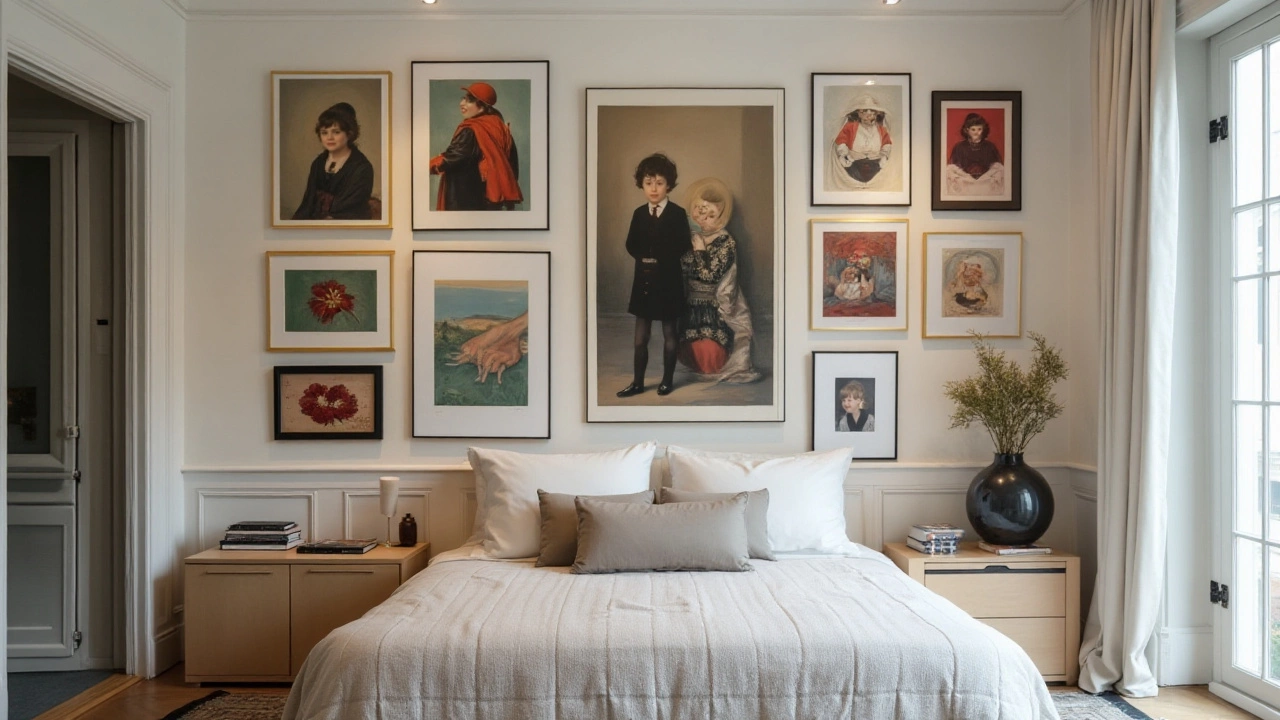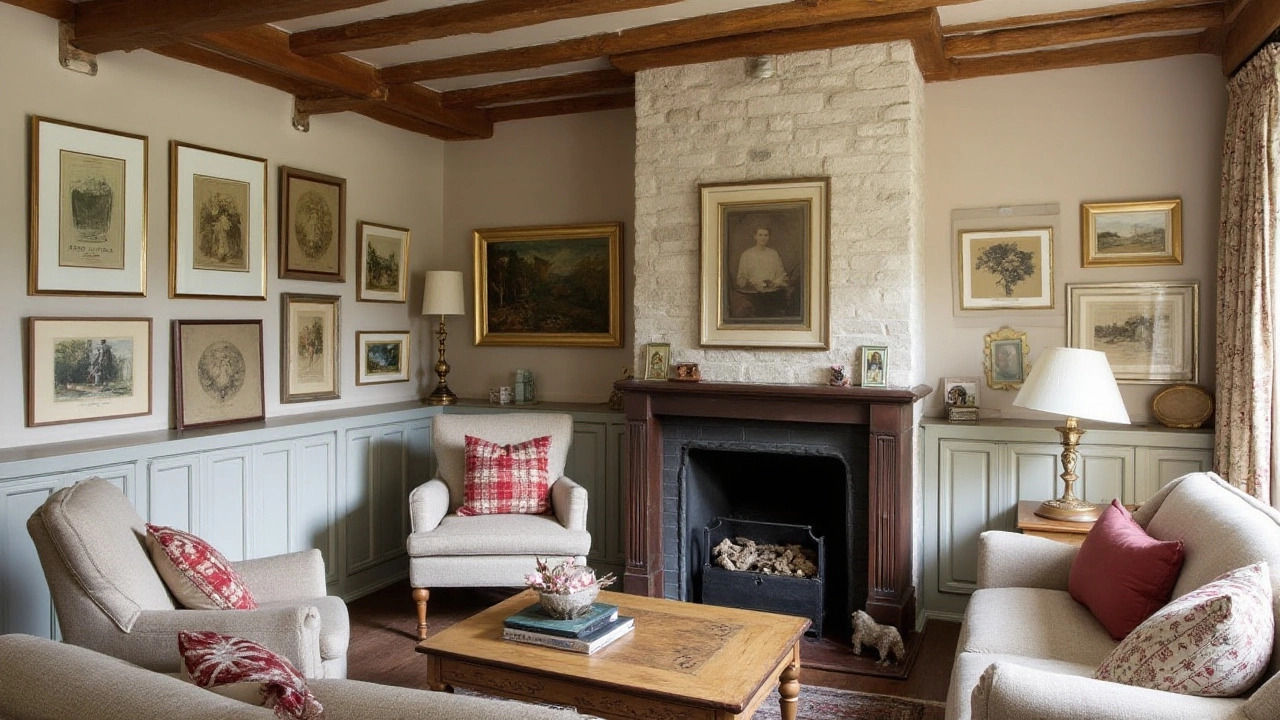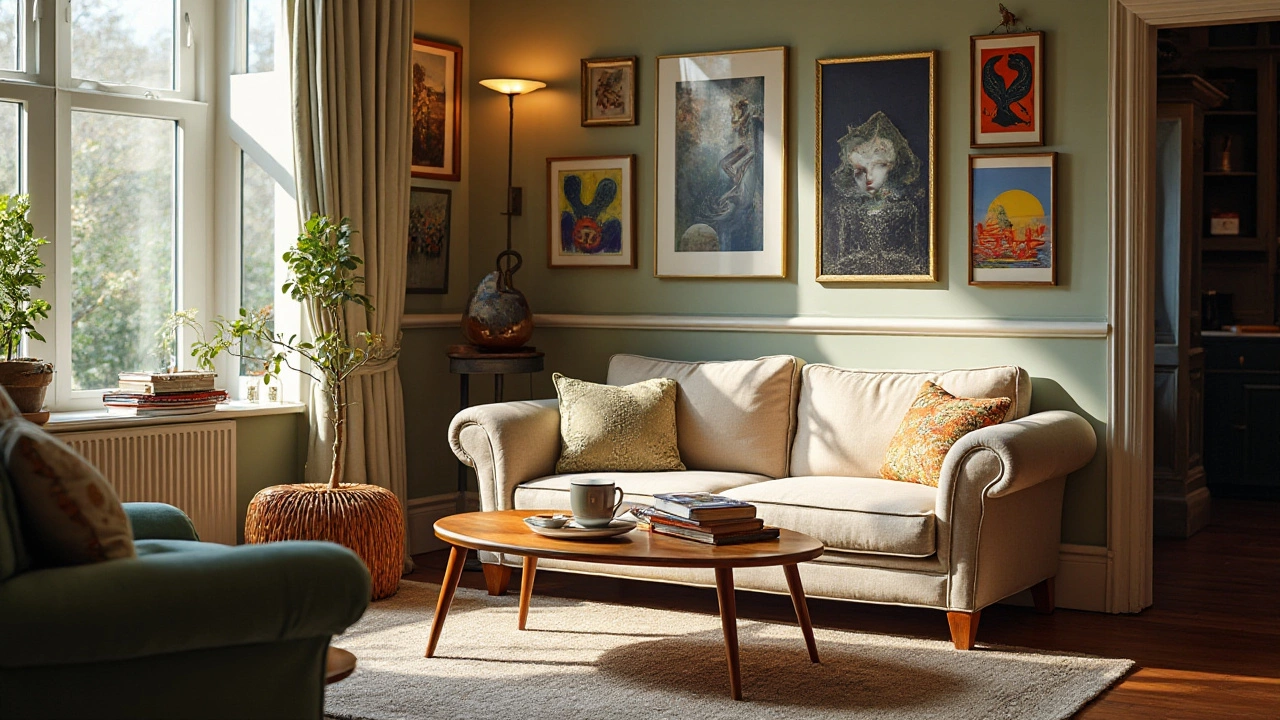When it comes to home decor, art holds the power to transform more than just walls. It's a statement, an expression of personality, and a source of inspiration all rolled into one. But can you actually have so much of it that the charm starts to fade?
The right amount of art can add character and warmth, setting the tone of a room, while too much can lead to a sense of overwhelming chaos. It’s an art in itself to curate your artwork, striking that perfect harmony between expressive abundance and elegant restraint.
This article will guide you through the nuances of art selection and placement, ensuring that your walls speak volumes without shouting. Whether you're a seasoned collector or a casual admirer, understanding how to create balance and align your pieces with your aesthetic vision is key.
- Understanding Wall Art Appeal
- Balancing Quantity and Quality
- Choosing the Right Pieces
- Creating a Visual Harmony
- Personalizing Your Space
Understanding Wall Art Appeal
The allure of wall art extends far beyond mere decoration; it serves as a conduit for expression, emotion, and communication. Art speaks to us in a language that transcends the spoken word, weaving stories through color, form, and texture. A room adorned with carefully selected pieces conveys a narrative unique to its inhabitants, offering insights into their passions and preferences. Many people believe that art is a mirror reflecting the soul of a household, and it's difficult to overstate how a single piece can breathe life into an otherwise sterile room. Consider the idea that art has historically been used to convey social status and intellectual prowess, a tradition that continues today in more subtle forms. In homes around the world, art is often a topic of conversation, serving as a silent yet eloquent host to guests and visitors.
The appeal of home decor through art lies not just in its aesthetic value but in its ability to transform a space's atmosphere. Wall art can evoke calm in a chaotic world or inspire creativity in a mundane setting. A dynamic painting with a vibrant color palette might energize a living room, while a serene landscape could bring tranquility to a bedroom. Different styles of art—be it contemporary, abstract, or classical—contribute distinct vibes to their environments. Studies indicate that exposure to art boosts mood and mental health, offering a respite from everyday stress and fostering a sense of well-being. A well-curated art collection doesn't just decorate a home; it enriches the soul, creating a sanctuary that resonates on both conscious and unconscious levels. As the famed artist Pablo Picasso once said,
"Art washes away from the soul the dust of everyday life."
The elements that make interior design through art so compelling are deeply rooted in sensory engagement and personal connection. Each piece of art possesses a unique energy, influencing how a space feels and how it impacts those who dwell within it. The integration of different art forms within a room can challenge conventional perception, encouraging viewers to see the world from new angles. Textures, mediums, and themes all play a role in this engagement, prompting an intimate dialogue between the observer and the object observed. There's an unspoken magic in walking into a room and instantly feeling drawn to a canvas, as if it holds secrets known only to you. Great art can evoke memories or spark aspirations, enhancing the emotional tapestry of our everyday environments. It's an ongoing dialogue, a dance of light and shadow, color and form, both defining and defying the physical boundaries in which it resides.
Balancing Quantity and Quality
Finding the perfect balance between quantity and quality in your wall art can significantly influence the overall vibe of your space. Too many pieces can lead to a crowded feel, while too few might make the room appear empty or sterile. It’s about bringing harmony, where each piece has room to breathe and make its statement. Imagine your living room as a canvas, with each art piece contributing to a greater story. The first task is to assess the available wall space. Large walls can handle bigger art pieces or a cluster of smaller ones, creating a stunning gallery-wall effect. For smaller walls, focus on a single impactful piece or a diptych to avoid overcrowding. Believe it or not, the way you position your art can change the perception of how much you have.
Think of it akin to arranging a fine meal; there should be an appetizer, a main course, and a dessert. Each art piece plays a role. Larger foundational pieces act like the main dish, essential and substantial, while smaller items provide accents, similar to side dishes. To gauge your balance, step back and view your wall holistically. Remember that spacing between pieces matters—it allows the eyes to rest and appreciate each work's individuality in home decor. When adding to your collection, opt for art that complements the existing atmosphere: color harmony, thematic consistency, and subject matter all play crucial roles.
"Art doesn't have to match your décor, but it should complement your personality," stated James Johnson, a renowned interior designer. By focusing on pieces that resonate with your soul, you imbue your space with authenticity and intention.
The core idea is to prioritize quality. A single masterpiece can carry more weight than a room full of mediocre pieces. Quality here refers to emotional resonance, craftsmanship, and relevance to your home’s theme. If you love landscapes, let a few exquisite pieces narrate that passion rather than crowding your space with too many unrelated artworks. Utilizing a mix of media can add interest and depth; try blending paintings with photographs or sculptures for a dynamic effect. Or, explore interior design magazines or online platforms that show real examples of expertly curated spaces.
When making decisions about quantity, keep a regular rotation of your collection to refresh your room’s mood without purchasing new art constantly. Seasonal rotations or occasional re-arrangements can keep your space feeling new and exciting. An intriguing fact is that exposure to varied art styles can stimulate creativity and mental wellbeing; hence it can be beneficial to vary the styles within your chosen framework. A curated list or a rotating setup becomes your art's exhibit, constantly evolving yet grounded in quality and theme.

Choosing the Right Pieces
Selecting the perfect wall art for your home is much like choosing the perfect outfit for a special occasion. It requires a keen eye and an understanding of the mood you wish to convey. Start by considering the size of your walls and the space available, as the dimensions of your art should complement, not overwhelm, the room. For large open spaces, bold and larger pieces might create an impressive statement, while smaller art pieces are better suited for more intimate areas. This approach of balancing scale with space ensures that the art enhances rather than overpowers the ambiance of the room.
The subject matter of your home decor also plays a crucial role in selecting pieces. Consider what themes resonate with you or reflect the purpose of the room. For instance, landscapes or abstract pieces can evoke relaxation and introspection, making them suitable for bedrooms or reading nooks. In contrast, vibrant colors and dynamic scenes might be more fitting for social spaces where energy and conversation flow freely. An art-filled home should narrate a cohesive story, with each piece contributing to a broader thematic arc.
While personal taste is paramount, it's beneficial to stay informed about current trends in interior design. This doesn't mean chasing every trend, but rather understanding what's out there and integrating what genuinely appeals to you. Recent trends show a rise in mixed media art and digital prints, integrating both traditional and contemporary styles. As noted by renowned interior designer Philippe Starck, "It's not about style. It's about knowing who you are."
"Art is not what you see, but what you make others see." – Edgar DegasThis encourages homeowners to select pieces that not only look good but also feel right in conveying personal values and emotions.
Explore local artists and galleries to infuse your collection with unique and original works, adding a layer of authenticity. Supporting local talent doesn't only diversify your collection; it also ensures you're part of a community narrative. Additionally, art fairs and exhibitions provide opportunities to explore diverse styles and mediums, opening your eyes to new possibilities. Remember, every piece of art has a story, and being part of that story adds depth to your collection.
If you find yourself overwhelmed by the choices or are unsure of your art instincts, consider seeking professional advice. Interior design consultants can provide valuable insights and guidance tailored to your style and space. They can help bridge the gap between your tastes and practical decoration, ensuring your walls reflect who you are while maintaining harmony with the room. Ultimately, the journey of populating your walls with art should be enjoyable and reflective, a chance to explore, experiment, and express.
Creating a Visual Harmony
Visual harmony on your walls is akin to composing a symphony, where every note must flow seamlessly to create melodic beauty. In the realm of interior design, harmony essentially ties together disparate elements into a cohesive whole. One might wonder, where does one start when striving for this elusive balance? The answer lies in understanding the space itself: the room's purpose, lighting, and dimensions all play pivotal roles. Are we adorning a cozy study or an open living room? Each space offers its unique cues on how to organize wall art to accentuate rather than clutter.
Consider the use of symmetry and spacing as building blocks for this harmony. Symmetry draws a steady, calming presence, offering a comforting predictability that can ground a room. Conversely, deliberate asymmetry can infuse energy and interest, capturing attention with a playful spirit. It's about aligning your choices with the room's energy and your personal tastes. Texture also plays a vital role in harmony. Mixing mediums – combining photography with paintings or adding sculptural elements – can provide depth and richness that flatters the eyes. Maintaining a consistent color palette or theme helps thread together different pieces without fighting for dominance.
The Art of Placement
When it comes to arranging multiple pieces, the classic gallery wall emerges as a popular choice. But even in a gallery wall, visual balance is key. You can use a pre-defined grid for a modern, structured look or opt for an organic arrangement to evoke creativity. Either way, focus on a central piece, a nucleus from which everything else radiates. This could extend beyond the usual suspects and feature other wall-hugging elements like shelves or plants to add more layers. Speaking of focal point walls, grouping artwork around significant architectural features like a fireplace or above a sofa can draw attention to those design elements, establishing a natural harmony between your home’s structure and decor.
In the words of interior design guru Nate Berkus,
"Your home should tell the story of who you are, and be a collection of what you love."This sentiment resonates deeply when contemplating visual harmony. Art should reflect personal narratives and histories, and in doing so, it organically contributes to the symphony of the room. Taking a step back to view the artwork from different angles can often reveal surprising perspectives. Adding mirrors or reflective surfaces can amplify artworks' visual impact by engaging with natural light, which breathes life into the textures and colors displayed. This interplay between light and art can shift throughout the day, offering a dynamic living art experience.
Finally, trust your instincts and individual sense of style. After all, harmony in art is not solely about adhering to design rules but also knowing when to break them. Whether you're drawn to minimalist compositions or maximalist collages, your walls are a canvas waiting for your expression. The joy of decorating is in the experimentation and the endless possibilities that every piece of art contributes to your life.

Personalizing Your Space
Creating a living space that reflects your unique personality can be an immensely rewarding endeavor. The selection and arrangement of wall art play a pivotal role in this personal transformation. As with any art form, the choices you make should resonate with your individuality and lifestyle. Begin by considering pieces that evoke a personal connection, perhaps a painting that inspires memories of a cherished vacation, or a photograph from a meaningful event.
It is also essential to think about the intended mood you wish to create in the room. Are you striving for a tranquil retreat, a vibrant workspace, or a cozy family area? The types of artwork you select can help craft these atmospheres. For instance, soft pastels and abstract designs might contribute to a serene vibe, whereas bold color palettes and dynamic compositions can inject energy and excitement.
When personalizing your space, it can be beneficial to think beyond traditional framed pieces. Consider incorporating diverse forms of art, such as tapestries, sculptures, or even a bespoke mural. This variety not only adds depth to your visual environment but also allows for greater expression of your creative preferences. As Pablo Picasso once said,
"Art washes away from the soul the dust of everyday life."Art has this incredible ability to breathe life into the ordinary and captivate the senses.
Another crucial aspect is the arrangement and display of art pieces. Try creating a focal point by arranging a collection in a grid or salon style, which can provide a dramatic visual impact. Alternatively, separate standout pieces with ample space around them to allow each one to make its mark.
An often overlooked factor in personalizing your space is the use of lighting. Proper illumination can dramatically affect how art is perceived. Accent lighting can highlight features and textures, while softer, diffused light can create a more subdued and intimate setting. Finally, remember that personalizing your space is not a one-time task. As tastes evolve, so too can your art collection, continuously enriching your home with layers of your personal narrative. This dynamic nature is precisely what makes curating wall art a lifelong journey of discovery and reflection.
